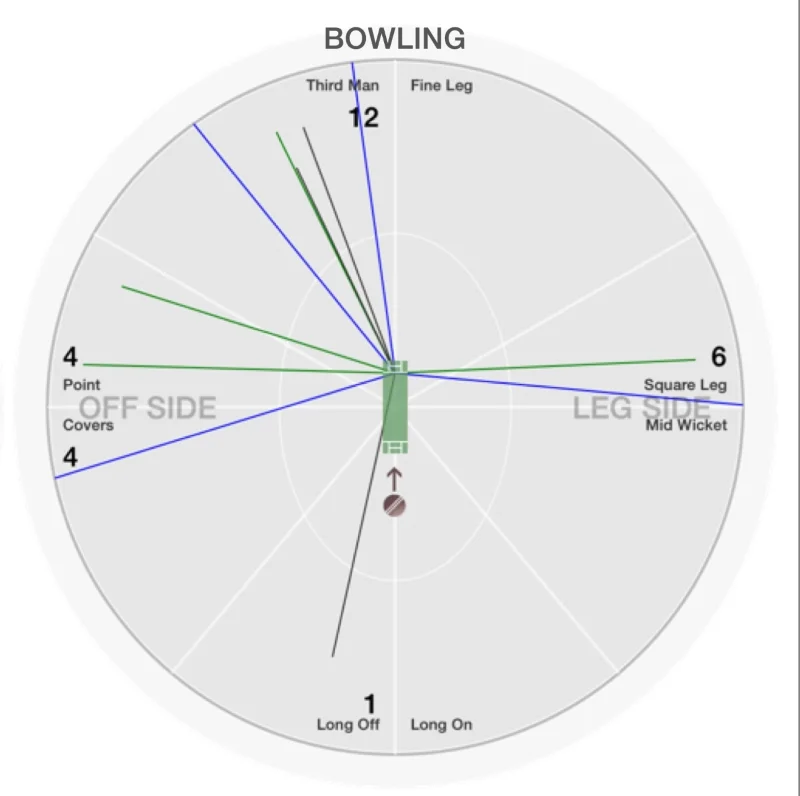This session was wet, so we were indoors with a core of 8 players for most of the time. We did get outside to do some wet weather fun stuff, that made the session relaxed and fun.
We warmed up outside with some throwing drills. I'm constantly working on throwing technique with players because it's an easy win. You can throw harder and straighter with a couple of simple changes. However, as is often the case with older players, despite the obvious and instand benefits of "baseball" style throwing, old habits die hard. I feel it will be a never-ending battle to remind people!
We used incrediballs to both save hands and stop cricket balls getting too wet.
We then moved onto a sliding drill, where the players had to run out, slide, pick up a stationary ball and throw it back to me. They were aquaplaning miles over the fresh mown surface and not taking it totally seriously. I didn't mind, it was a bit silly, but I also stressed how rarely we get to work on sliding skills and how it is a chance to get better at it. In the end they did it seriously enough to get something productive as well has have fun.
We finished with a few catches, because you can never take enough.
Then we had a net session indoors. One net was live with bowlers, the other was me giving throws and technical tips.
Again, I asked players to think about what they were aiming to achieve before they walked in, and spoke to them afterwards to find out if they achieved it.
In general this focuses the mind, but what has surprised me is the resistance to this approach.
For example, one player went in with one aim, got bored and started smashing it. He then said afterwards "I changed my mind and wanted to practice death hitting". It was clearly an excuse because he's a top order batter who has no Twenty20 to play. It seemed to me he wasn't getting much from the net and decided to have some fun instead of doubling down. To me this seemed like a wasted chance to bat with discipline in an imperfect situation. He - as I still hear people say - wanted to "just have a hit".
Another player self-identified that he wanted to bring back his driving as he feels he is missing out because he has worked so hard on running the ball into gaps square of the wicket. I threw him half volley after half volley, and told him to drive everything as an experiment. He drove about 25%, nudged about half square and defended the rest. Again, I find this odd that he says he wants to do one thing then ignores both his and my advice on the matter. Again, I suspect his real intention was not to improve the drive but to "have a hit" and made up the drive thing to keep me happy.
I'm still wrestling with how to deal with moments like this. I'm not the type to shout at people to play properly as players are in charge of their own game and should know what works for them. However, often they are making the one mistake I am desperate to avoid; mindless netting. I have tried cajoling, insisting and plain old shouting, yet the culture persists, hidden behind excuses to keep the coach happy.
It's frustrating on the level of people not getting better. In my mind, players are free to use their training time as they wish, but I so often see wasted nets despite my efforts to lure them into self-improvement. There is always lots of activity, people feel good they got their 15 minute bat and we all stay exactly the same skill level; wishing the form fairy will bestow her magic on us.
This might be all right if we were scoring 200+ every week but we are not and we have not been for a while, so we need to get better rather than just have some activity. For me it goes back to the key question "have I done everything in the time available to feel ready for Saturday?"
However, there were plenty of positives too. A young tail end level batsman nailing the on drive, and two guys with balance issues (one not getting forward enough, one falling over) working hard on getting into better positions. Overall it was a positive feeling session.
- The good: Fun, relaxed session. Some productive technical batting work done.
- Needs work: More technical focus on the bowlers, better linking the batsman's stated aims with the actual session.






